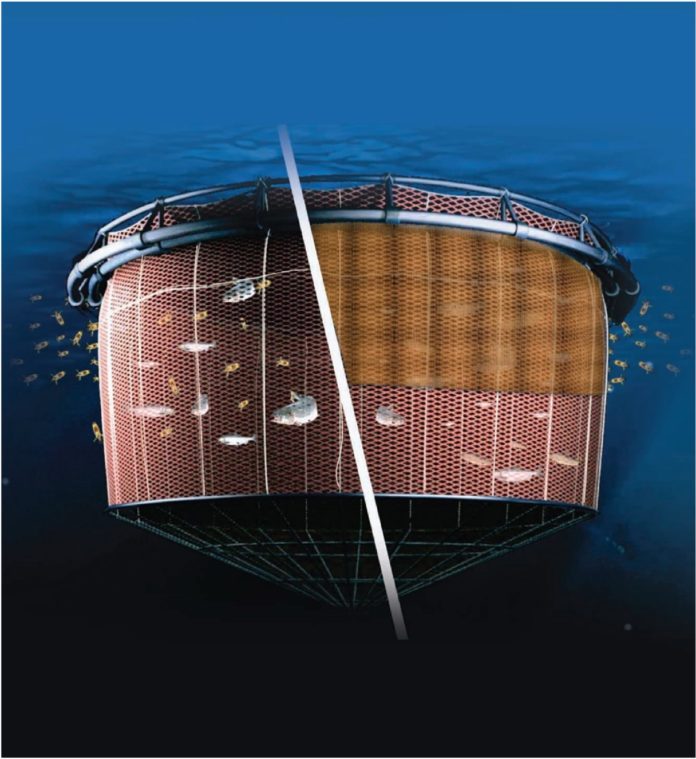Several salmon farming operations in Chile, including Cermaq, Mowi, and Salmones Austral, are adopting non-pharmacological methods to combat the growing challenge of sea lice (Caligus).
These companies are employing physical barriers such as anti-lice skirts, which are designed to reduce the presence of sea lice in salmon farming environments without the need for chemical treatments, according to a press release from Indian net-maker, Garware Technical Fibres.
Caligus, a persistent parasite in the salmon industry, poses significant risks to fish health by damaging their skin and mucus layers, which serve as their primary immune defense. In recent years, the effectiveness of traditional antiparasitic treatments has declined due to the development of resistance. As a result, the industry has turned to alternative, non-pharmacological strategies to control lice infestations.
Lice skirts
Anti-lice skirts, which physically separate farmed fish from external water bodies, are among the tools being trialed. By preventing parasites in the early stages of development from entering salmon enclosures, these skirts aim to lower infestation levels. Several farms operated by Cermaq, Mowi, and Salmones Austral have begun using this technology, following promising results from trials in other regions, such as Canada.
“The use of anti-lice skirts offers a non-chemical option that is part of an integrated health strategy to manage sea lice,” said Gopakumar Menon, Americas Manager at Garware.
Early indicators suggest that anti-lice skirts may reduce the need for costly bath treatments and lower overall mortality and management costs. However, the effectiveness of the technology in Chilean waters is still being evaluated, with results expected within six months to a year. Key metrics include the reduction of lice numbers, improved fish welfare, and potential cost savings.
The move towards physical barriers aligns with the industry’s broader effort to mitigate the environmental impact of chemical treatments and manage rising resistance to parasiticides. By using non-pharmacological tools like anti-lice skirts, salmon producers are hoping to create more sustainable, long-term solutions to a problem that continues to plague the sector.


